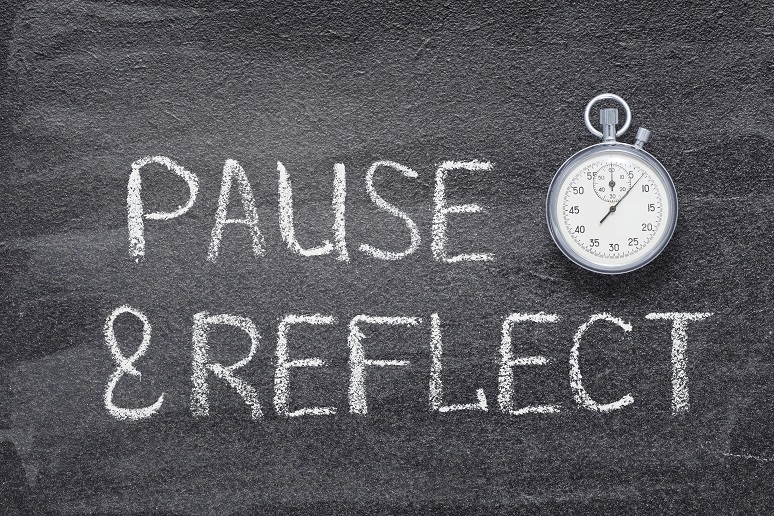Shine like a STAR

I will use Boud’s model of reflection to describe my experience of the simulated interviews: exploring my behaviour, ideas, and feelings towards the interviews, followed by a reflection and re-evaluation of the experience, and finally the outcomes of this, including any new perspectives that I have gained.
Experience: behaviour, ideas and feelings

I initially felt anxious about the simulated interviews, especially being interviewed by some of my closest friends. I wanted to explore interview anxiety further prior to the simulated interviews, and therefore, I read an article about the five dimensions of interview anxiety, ‘communication, appearance, social, performance and behavioural.’ (McCarthy and Goffin, 2004, p.607). This helped me to gain a greater understanding of the interview anxiety dimensions which impact me the most.
Communication anxiety is common due to ‘the need to keep the communication flowing.’ (Schneider et al, 2019, p.2). However, this is not an aspect of interview anxiety which impacts me greatly as I have learned and developed how to communicate effectively in a range of different settings, including personally caring for ill family members, and speaking to media sources. This has enabled me to become more adaptable in my communication style depending on the audience, and more comfortable with sharing both professional and personal experiences.
Appearance anxiety is the dimension of interview anxiety which impacts me most as it ‘centres on physical appearance’ (Schneider et al, 2019, p.2). I feel self-conscious about issues such as my weight, and acne which can flare up in stressful situations like interviews, this anxiety is heightened while walking into the interview as good first impressions are very important to me. To tackle these nerves, I dress in an outfit I am comfortable in, and tend to wear colours, such as red, which I feel more confident in.
This is linked to social anxiety, which stems from wanting to be liked, and worrying about the ability to use social behaviours appropriately, such as being able to build a rapport, and performance anxiety- a fear of failure. Despite generally being quite good at building rapport with people, I fear that people are judging me. While I was not worried about this prior to the simulated interviews as I was working with close friends, it is often an area I struggle with. This is because I am passionate and personally connected to my professional work as it has primarily been inspired by my personal struggles with mental health. Such as, if I was not successful at interview, this could take a toll on my self-worth as I am emotionally invested in my work.
Finally, behavioural anxiety which involves ‘the automatic reactions one’s body has to the interview situation,’ (Schneider et al 2019, p.2), is not a core issue for me as my anxiety rarely physically manifests noticeably.
Reflection: re-evaluating my simulated interview experience

Despite initially being anxious about the simulated interviews, the STAR technique helped me to keep focused throughout the interview. This methodological approach helped me to concentrate on answering the specific question being asked by describing the context and background of a particular situation, followed by the problems and challenges I faced, what I did and how, and finally, the impact of my actions.
Behavioural interview questions which ask interviewees to describe a situation they have faced in the past are a popular type of structured interview and enable the interviewer to learn about the candidates ‘relevant skills, traits or competency to predict future job performance.’ (Doll, 2018, p.53). Upon reflecting on my interview experience, I have become more confident in my ability during interviews to be ‘direct, logical, meaningful and personalised.’ (Doll, 2018, p.55). I was initially concerned about the possibility of my anxiety physically manifesting throughout the interview. However, from reviewing my feedback, this was not a prominent issue as it has highlighted that there was only one stumble at the start, and I remained confident throughout the remainder of the interview.
Reflecting on my interview feedback has boosted my self-esteem significantly and reduced my anxiety. I was delighted to see that the feedback underpinned a range of positive comments, including, really good use of personal and professional experience, a good demonstration of very caring and resilient qualities, and very specific examples that link perfectly with the job description.
I thoroughly enjoyed this simulated interview experience, despite dreading it at first- it has boosted my
confidence for my real job interview coming up for a similar role, helped me to rationalise and manage interview anxiety, and gain valuable interview experience. I think simulated interviews should become a more popular aspect of university across all disciplines.
Outcomes: my new perspectives, and change in behaviour

The simulated interviews have given me a range of new perspectives, such as, interviews are a good opportunity to prepare for, and begin to manage work related anxiety as it is unavoidable in ‘today’s stressful and fast paced work environment,’ (Yuen, 1998, p.18). Furthermore, I now value the importance of sharing my personal care experience to a greater extent than I did previously, particularly within health and social care.
After various discussions with senior health and social care staff, I have discovered that employers like a combination of professional and personal experience where it is relevant as it shows strength of character, interpersonal skills, and an ability to be flexible and work under pressure both professionally, and personally. I am now more aware of a depth of experience and skills which prior to this simulated interview process, I did not give myself credit for, such as being a carer for my grandfather who is a cancer, stroke and dementia patient.
In fact, I was delighted to be able to implement my commitment to action in a real job interview a week after the simulated interview, which I am pleased to say was a successful experience as I am starting my new job very shortly. My interview feedback further reiterated that of my simulated interview in which the interviewers found my personal experience very moving, and something that stood out from other candidates.
References:
Boud, D., Keogh, R., & Walker, D. (1985) Promoting Reflection in Learning: A Model. Reflection:Turning Reflection into Learning. London: Routledge.
Doll, J L. (2018) Structured Interviews: Developing Interviewing Skills in Human Resource Management Courses. Management Teaching Review, vol. 3, no. 1, pp. 46–61.
Goffin,R.,& McCarthy,J. (2004) Measuring Job Interview Anxiety: beyond weak knees and sweaty palms. Personnel Psychology, vol. 57, pp.607-637.
Phillips, J.M., Gully, S.M. (2015). Strategic staffing (3rd ed.). Hoboken, NJ: Pearson
Schneider L, Powell DM, Bonaccio S. (2019) Does interview anxiety predict job performance and does it influence the predictive validity of interviews? Vol 27 pp. 328–336
Yuen J. (1998). Creative ways for managing workplace tension. Communication World, vol. 15, pp.18–20.

The Simulated Interview
You May Also Like

The interview may have been simulated, but the anxiety was real!
21 February 2022
So You Want To Be A Teacher?
17 February 2022
